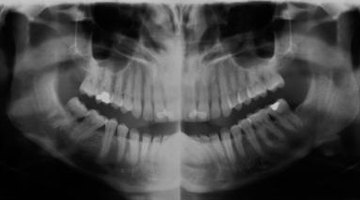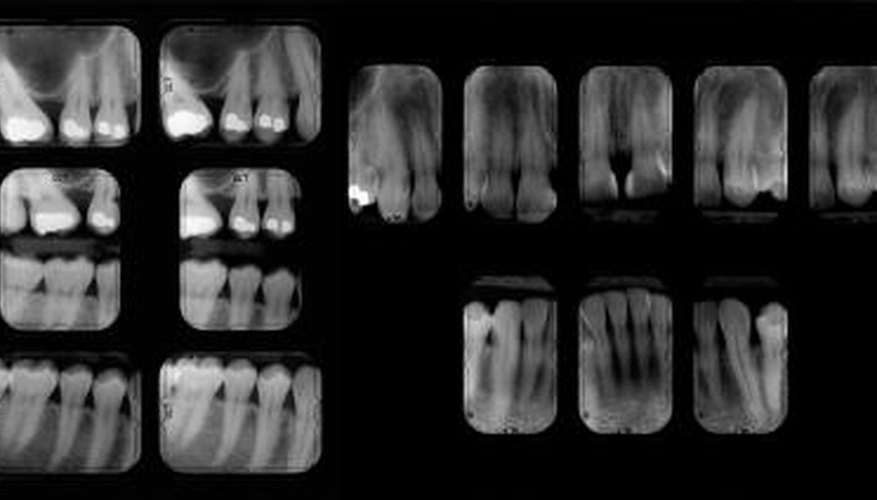The decayed, missing and filled teeth (DMFT) index is used to describe the prevalence of dental decay in adults. The index includes an individual's number of decayed, missing and filled permanent teeth to quantify his amount of dental decay. Because the presence of third molars, or wisdom teeth, varies throughout the population, considering them in the calculation is not advised.
- The decayed, missing and filled teeth (DMFT) index is used to describe the prevalence of dental decay in adults.
- Because the presence of third molars, or wisdom teeth, varies throughout the population, considering them in the calculation is not advised.

Count the number of teeth that have existing dental decay by using the individual's dental examination data and dental radiographs. The presence of at least one cavity in one tooth means it must be counted.

Count the person's number of teeth that are missing using the dental examination data and dental radiographs. A person should have 28 teeth, not including four wisdom teeth.

Count the individual's number of teeth that have a filling or fillings using the dental examination data and dental radiographs. Fillings include tooth-coloured fillings, silver-coloured (amalgam) fillings, crowns and veneers. If a tooth has at least one of those fillings, then include it in this tally unless it also has decay and was included in the tally for decayed teeth.
Add the number of decayed teeth, missing teeth and filled teeth. The total should not exceed 28 because wisdom teeth should not be included in the calculation.

Divide the total number of decayed, missing and filled teeth you counted by 28 to find the person's DMFT index ratio. Multiply the resulting ratio by 100 to determine the percentage of decayed, missing and filled teeth. If an individual's total number of decayed, missing and filled teeth is seven, for example, then divide seven by 28. The resulting DMFT ratio is 0.25. To convert that individual's DMFT ratio into a percentage, multiply 0.25 by 100, yielding a DMFT of 25 per cent.
- Count the individual's number of teeth that have a filling or fillings using the dental examination data and dental radiographs.
- If an individual's total number of decayed, missing and filled teeth is seven, for example, then divide seven by 28.
TIP
Only a licensed dentist can diagnose dental decay. Therefore, a dental examination is necessary to calculate an individual's DMFT index ratio. The equivalent index for children is known as "dmft index," with "dmft" in all lower case letters, and its calculation uses primary, or baby, teeth. A child's total number of primary teeth is 20.
